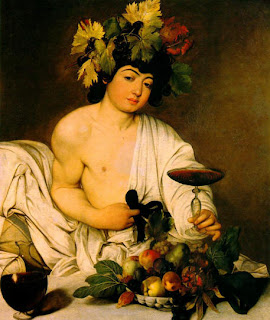copyright 2010 art of living, PrimaMedia,Inc.
Guest Post by : Karly Berezowsky
This is the year of Caravaggio, the famed Italian artist.. Here are some interesting facts about one of the many geniuses of Italian art..Recently, a Caravaggio painting has been recovered in Berlin, Germany, after being pilfered in 2008 in Odessa, Ukraine. The stolen piece was actually a modern replica of Caravaggio’s Taking of Christ. It has been proclaimed by art historians that the Taking of Christ was not painted by Caravaggio due to distinct differences in the painted figures. It may have been painted by one of his students; despite being manifested as an original Caravaggio by the Soviets in 1950.
But to understand how it was contrived a fake one must understand how immensely avant-garde Caravaggio truly was during the Italian Baroque period. Caravaggio was wholeheartedly innovative and anarchistic because he is taking off the blindfold and showing real issues like murder and squalor. This painting portrays an extremely traumatic murder.
Caravaggio was an Italian Baroque painter. He lived a rough life, he was arrested multiple times. He used ordinary common folk such as people in the streets as his models. He painted down-to-earth, real earthly people with real problems. The subject matter for the majority of his works was religious scenes. He committed a murder and there was a price on his head to bring him in alive or dead. His temper caused him to get into many fights and upset a lot of townspeople which forced him to flee to various areas of Europe. But a life on the run could only last so long.
Caravaggio was an innovator that used techniques called tenebrism and chiaroscuro throughout his work. Many of his pieces are considered to be Shock Theater because they are so dramatic and have theatrical elements to them. For instance, some of his paintings have spotlight lighting and drawn red curtains.
Caravaggio painted what he saw, using people on the streets as models. The Calling of St. Matthew depicted Jesus Christ pointing at Matthew in a dim dive of a tavern. The action starts to the left and then flies off to the right; this makes the composition dynamic because it forces your eyes to move with the unfolding scene.
Caravaggio had an interesting take on classical art which can be seen in his painting, Boy with a Basket of Fruit. In which he makes the God Baccus look sickly due to his greenish skin color, when he is supposed to be the god of wine and merriment. Caravaggio made the God Baccus look more earthly and unkempt. Caravaggio is in a way rejecting the classical form of art by making it more seedy and run-down.
Caravaggio was rejected after he painted The Death of the Virgin. One of Caravaggio’s most famous pieces was Death of the Virgin. It was commissioned for the Church of Santa Maria. His patrons hated it so much they actually returned it to him, totally rejecting his art and skill. It depicts the death of the Virgin Mary. Mary actually looks dead, her flesh is green and the body appears bloated; much like the dead deer do on the side of the road in the summer heat, limbs outstretched and fat. Caravaggio was totally radical painting the Virgin Mary like inflated road kill. It is rumored that he used a drowned whore from the morgue as the model for the Virgin Mary. Just imagine the riot that would ensue if someone painted her like a prostitute today and then plastered it onto the wall of the Vatican. And it is because of all of these clandestine features of the painting that the patron nuns returned it to him. They reasonably objected to the painting because they thought it was too unorthodox because she looks like a corpse which is an indecent image when she is supposed to be an icon of light, heaven and hope.
For recipes and charmingstories on life in Italy get your copy of the award winning book The Basic Art of Italian Cooking: Holidays & Special Occasions-2nd edition


1 comment:
Hello, I love that history!
Your blog is wonderful, Thank you for sharing:)
Post a Comment